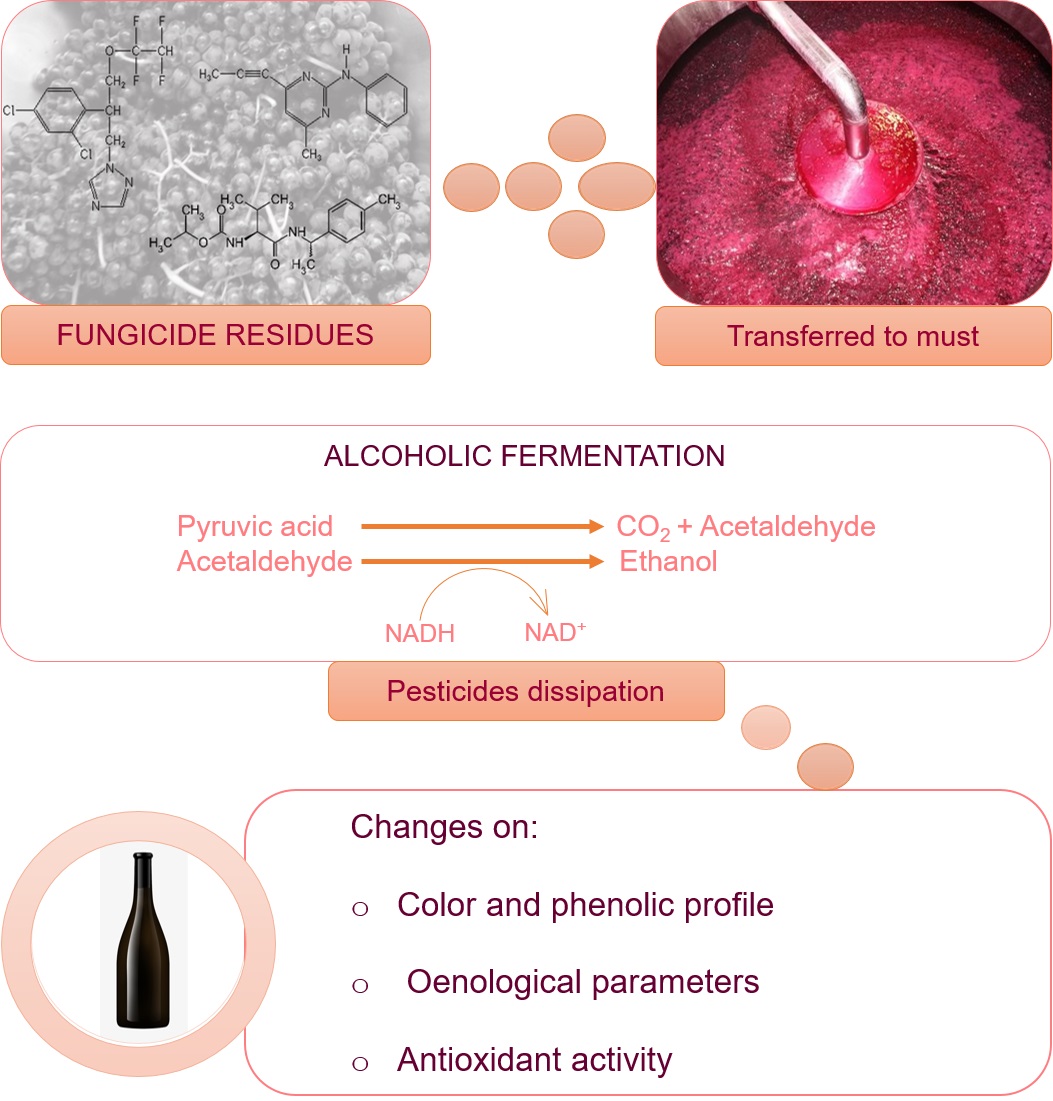The effect of fungicides on fermentation is of paramount importance to control the quality and safety of wines. In this work, the quality (oenological parameters, color, phenolic content, antioxidant activity, and fungicide residues) of wines from Monastrell grapes fortified with iprovalicarb, mepanipyrim and tetraconazole fungicides was evaluated. Along of the winemaking process, initial residues of mepanipyrim and tetraconazole were removed in more than a 90 % while dissipation of iprovalicarb was around 73 %. Significant statistical differences were found in presence of iprovalicarb and mepanipyrim residues especially at the highest concentration assayed. For both fungicides, an increase of the volatile acidity (between 4 and 8.6 times), the lactic acid content (between 8.6 and 20.5 times), the percentage of polymeric anthocyanins (between 1.3 and 1.7 times) and also a slight increase of the total phenolic index and the total anthocyanins content determined by spectrophotometry was observed. On the contrary, the total monomeric anthocyanins content decreased about 16.3 and 28.6 % in presence of iprovalicarb and mepanipyrim, respectively. These results could be related with the addition of SO2 to the grape must and a higher development of acetic acid or lactic bacteria in presence of these fungicides. The color of the final wines was also different in comparison with the control, with a higher yellow component, color intensity, tonality and hue angle, because of pH changes in the medium. Tetraconazole fermentations had a more similar trend to the control wine, probably due to the lower concentration of this fungicide in the grape must at the initial time. No effects on the antioxidant activity was observed for anyone of the target fungicides. A multivariate statistical analysis was done to view interrelationships between different variables (color and anthocyanins profile). The obtained model allowed to separate wines according to the fungicide treatment applied.

